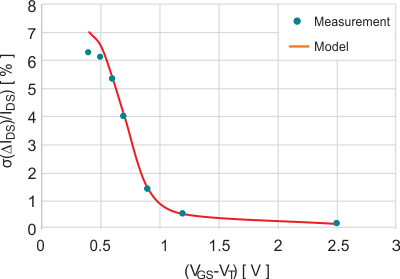SLYY203B September 2021 – April 2023 BQ25125 , LM5123-Q1 , LMR43610 , LMR43610-Q1 , LMR43620 , LMR43620-Q1 , TPS22916 , TPS3840 , TPS62840 , TPS63900 , TPS7A02
- 1
- Overview
- At a glance
- Contributors to IQ
- Why low IQ creates new challenges
- How to break low IQ barriers
-
Electrical Characteristics
- 18
- Avoiding potential system pitfalls in a low-IQ designs
- Achieving low IQ, but not losing flexibility
- Reducing external component count to lower IQ in automotive applications automotive applications
- Smart on or enable features supporting low-IQ at the Smart on or enable features supporting low-IQ at the system level
- Conclusion
- Key product categories for low IQ
Addressing leakage and subthreshold operation issues
TI power process technologies feature optimized low-power design components. High-density resistors and capacitors combined with novel circuit techniques enable a reduction in both IQ and die area. Power FETs and digital logic provide low-leakage transistors while simultaneously being optimized for speed; thus, ISHDN and area are not exclusively compromised. Additionally, accurate modeling of subthreshold operation at lower VGS-VT levels – as shown in Figure 18 – enables reliable operation down to the picoampere/micrometer biasing level.
 Figure 18 Sigma IDS percentage mismatch
vs. VGS – VT .
Figure 18 Sigma IDS percentage mismatch
vs. VGS – VT .